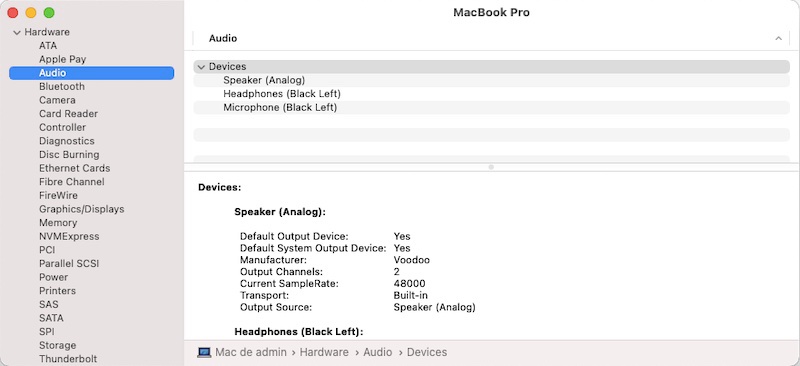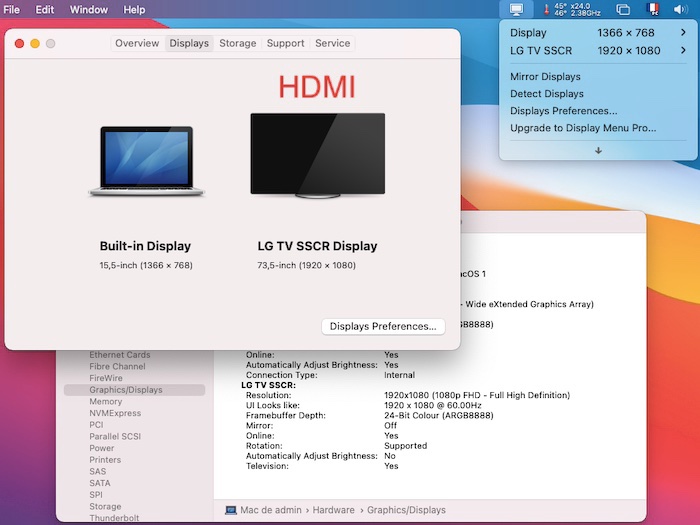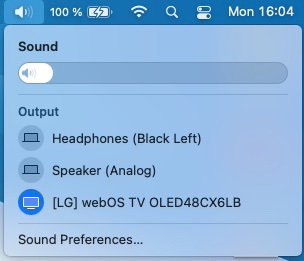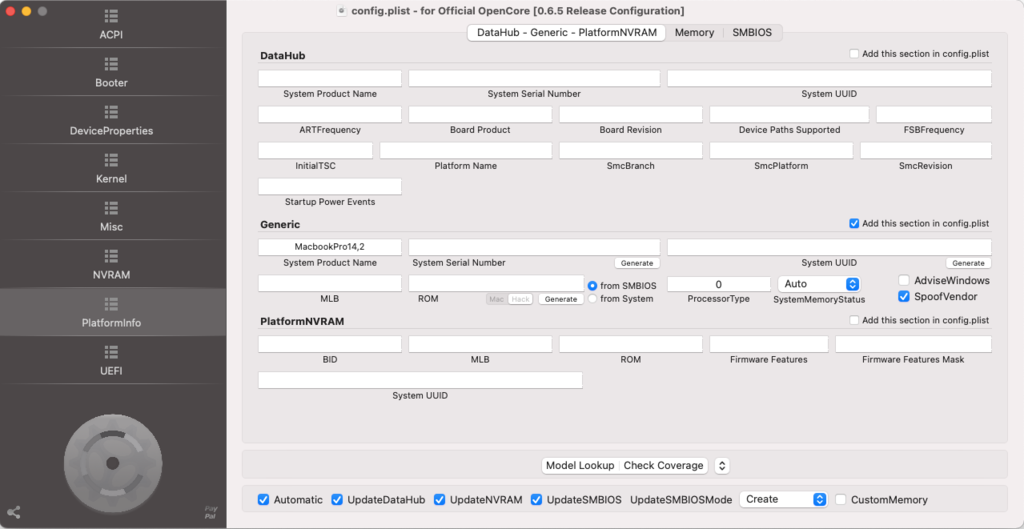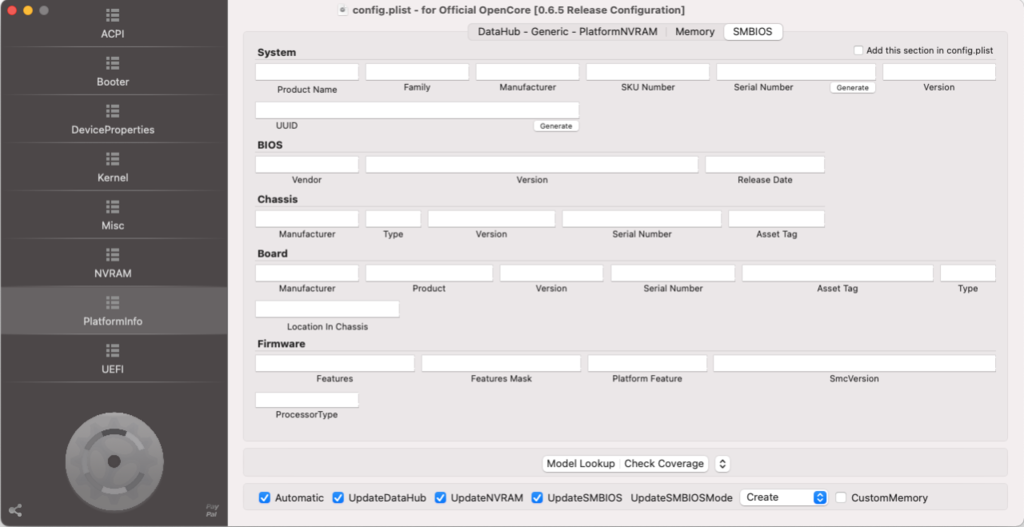-
Posts
10067 -
Joined
-
Last visited
-
Days Won
569
Content Type
Profiles
Articles, News and Tips
Forums
Everything posted by Hervé
-
Why don't you start by consulting and reading Dortania's documentation for guidance on the OpenCore configuration?
-
Target macOS release: Big Sur 11.x This is an OpenCore-based installation (on a SATA-III 6Gb/s SSD) using the standard vanilla method detailed below: Working: full graphics acceleration on Intel HD4400 graphics (with Lilu v1.5.0 v1.6.0 + WEG v1.4.6 v1.5.8 + usual Azul FB properties injection) multi-display on VGA (OOB) + HDMI (with injected connector patch) brightness control with Fn-Ins/Fn-PgDn (with Dortania's SSDT-PNLF); keys remapping required here audio, including combo jack microphone input/headphones output (with VoodooHDA v2.9.2 + AppleHDADisabler); manual output selection required between speakers and headphones. I was only able to get audio with AppleALC (layout 13) if I booted with Clover. HDMI audio (with ACPI renaming of B0D3 to HDAU) GigEthernet LAN (with Mieze's RealtekRTL8111 v2.4.0d6) wireless with any compatible card integrated webcam (OOB) Realtek USB-internal SD Card reader (with Firewolf's RealtekCardReader v0.9.6) full CPU power management 0.8->1.7GHz, including Turbo boost 1.8->2.7GHz (with Dortania's SSDT-PLUG.aml) sleep & wake (with Hackintool's SSDT-UIAC): sleep with Battery PrefPane settings, Apple menu, PWR button but not through lid closing wake with PWR button, keyboard key, mouse/trackpad, lid opening, AC plugging partial battery management (with Rehabman's ACPIBatteryManager v1.90.1); no auto-detection of AC plugging/unplugging (except after sleep/wake) but battery charge % Ok keyboard & basic TrackPad functionalities (with Rehabman's VoodooPS2Controller v1.9.2) all USB ports Not working: AC charger plugging/unplugging; proper status only reflected at startup or after wake Bluetooth; not seen/detected due to likely USB-related issue; in fact, Bluetooth no longer appears/works in Windows after having booted macOS with OC GeekBench v4.4.x (64bit) results: 1) 11.x USB installer creation Using a USB key of 16GB minimum, create a Big Sur USB installer through the following Terminal command: sudo <path>/Install\ macOS\ Big\ Sur.app/Contents/Resources/createinstallmedia --volume /Volumes/<USB key> where: <path> = location of Big Sur installation package (eg: /Applications if freshly downloaded) <USB key> = name of formatted USB volume (eg: USB_16GB) The process will take several minutes. Once completed: Setup your BIOS for UEFI mode if not already done so (installation won't work in CSM mode). Recommended BIOS settings available here. mount the EFI partition of your USB installer and, if applicable, erase the partition through Disk Utility or delete all of its existing contents. Tools such as Mount EFI or apps such as Clover Configurator or EFI Mounter may be used to that effect. Failing that, the simple diskutil mount command does the trick once you've identified your EFI partition with diskutil list command: sudo diskutil list (shows list of disks and partitions) sudo diskutil mount /dev/<identified disk> (eg: sudo diskutil mount /dev/disk0s1) uncompress the following Satellite Pro R50-B-116 Big Sur OpenCore pack and copy the EFI folder to the mounted EFI partition: OC_0.6.5_EFI_R50-B-116_BigSur.zip OC_0.8.0_EFI_R50-B-116_BigSur.zip Please note that, to modify your OpenCore config, you should use the following ProperTree app (see Dortania's documentation for details on this) though I must say that I've never encountered any issues with OpenCore Configurator app and OC: ProperTree.zip 2) 11.x installation boot the Big Sur USB installer at the OpenCore main menu, select the "Install macOS Big Sur" partition and press [ENTER] at Big Sur main installation screen, select Disk Utility to create & format the target Big Sur partition/disk. Note that I could not begin installation unless my target partition/disk was formatted HFS+ exit DU and return to Big Sur main installation screen, then proceed with installation the installation process will twice reboot a temporary macOS installer partition to complete the installation. This overall installation process takes much longer (~1hr) than what was experienced with previous macOS versions so be patient. Don't be frightened by the 2nd reboot which show things never seen with previous macOS versions a 3rd reboot will boot your target named Big Sur partition/disk and will be quickly followed by a 4th and final reboot of that same target Big Sur partition/disk each time, reboot via your USB installer. 3) Post-installation tuning Once the finalised Big Sur installation has booted, complete the 1st boot configuration tuning Once at the desktop, mount the EFI partition of your Big Sur disk Copy the EFI folder of the OpenCore R50-B-116 Big Sur pack to the mounted EFI partition You may then reboot and verify that Big Sur boots off your disk through OpenCore You may then disable verbose mode by removing -v flag from NVRAM->7C436110-AB2A-4BBB-A880-FE41995C9F82->boot-args in the OpenCore config file. You may then modify your SMBIOS info under PlatformInfo->Generic section and ensure you have unique numbers or unique combination of numbers. Use GenSMBIOS tool (available here) to generate new MLB, ROM, SystemSerialNumber and SystemUUID. Refer to Dortania's documentation for further info and guidance. Alternatively, you may use OpenCoreConfigurator app given that it is generally Ok too these days. Complete any additional fine-tuning such as disabling hibernation, disabling GateKeeper, etc. Please note that if you use a DW1820A card in this laptop, make sure to: enable AirportBrcmFixup parent kext (not the PlugIns) in the Kernel section of your OC config uncomment the compatible, pci-aspm-default and model properties against device located at PciRoot(0x0)/Pci(0x1c,0x1)/Pci(0x0,0x0) in the PropertiesInjection section Please note that, after any significant change to your Big Sur setup requiring to modify your OpenCore configuration, it's usually required to execute a Reset NVRAM from OpenCore main menu (aka Picker) in order for the change(s) to be taken into account. At time of writing (Jan 2021), this remains work in progress in order to address: AC charger connection/disconnection status Audio with AppleALC when booting with OpenCore TrackPad better recognition and gestures Brightness keys remapping Bluetooth off compatible M.2 combo card - - - - - - - - - - Edit #1: 30 May 2022 Revised OC 0.8.0 pack with support for Realtek card reader
-
What panic message are you getting? What do you use to install Catalina? Clover? Opencore? What versions? How did you make your USB installer, using what procedure? Please post zipped copy of EFI folder.
-
Of course, it's one of the Broadcom chipsets dropped in Big Sur as indicated in our Wireless cards inventory last December...
-
Just check the card's PCI id in IOReg with IORegistryExplorer or DPCIManager.
-
Apple Airport Card is pretty meaningless. You'll have to state the exact card model to get a proper answer. As Jake said, Big Sur dropped support for even more cards than Mojave & Catalina did so you may have one of those. As usual, please consult our wireless cards inventory.
-
I'm afraid I can't; you'll have to look that up.
-
Shutdown issues usually require an ACPI patch, whether through direct DSDT patching or a specific SSDT.
-
There's a typo in Dortania's buying guide which shows Quadro K220 (no such card) instead of K2200. Quadro K2200 won't be supported at all. It's a Maxwell card and will have to be replaced by a supported alternative or Hackintosh will have to run on the P530 iGPU which should be supported as a SKL HD530 iGPU with a little tweaking.
-

Problems with low-res Latitude E6530 running Big Sur
Hervé replied to ngtv0404's topic in The Archive
I too experienced issues of freeze after wake, either immediately or after a few seconds. I thought I had nailed it a couple of times with OC config adjustments only to be disappointed. The issue only happens with OC, I never experienced it with Clover. Since yesterday, it seems to be better if: 1) standby is turned off sudo pmset -a standby 0 2) Chrome is not running when computer is put to sleep So far, no freeze but It's only been 24hrs... For the rest no issues with USB ports, whether USB2 or USB3.0 and your network issues will be related to that Atheros AR9462 card you're using; those have always had poor support and we've always advocated to replace them by fully supported cards. -
As I said, your SMBIOS is incorrect and your config file may be corrupt (I'm unable to open it with ProperTree app).
-
What do you mean by "also installed the AMD7000 kext" ? It's a native kext (in /S/L/E) from ML to Big Sur... Check your card's id against what the native kext supports. If you search the Net, you'll find some people who got it running under macOS by faking id 1002:683d and using AMD framebuffer Futomaki with a patch. So, experiment... https://www.insanelymac.com/forum/topic/334965-amd-firepro-w4100-high-cinebench-r15-opengl-if-first-run-under-windows/ Depending on the macOS version you run on your old and unsupported MacPro, you may want to consider a more compatible graphics card. https://dortania.github.io/GPU-Buyers-Guide/modern-gpus/amd-gpu.html#hd-7000-series-7xxx https://www.techpowerup.com/gpu-specs/firepro-w4100.c2611
-
I'd say your SMBIOS setup is not complete and incorrect. Make sure to fully complete that part of the configuration process. https://dortania.github.io/OpenCore-Install-Guide/config.plist/kaby-lake.html#platforminfo
-

Dell OptiPlex 3080: not all PCI devices properly listed
Hervé replied to ugur's topic in The Archive
-> Moved to Desktop section since this is not a laptop. Please make sure you post in the right section. You probably just re-used a config you grabbed somewhere without knowing what it fully contains nor understanding everything on the matter. All of this is just cosmetic and in no way necessary. If you want to have all those inner hardware elements reflected in your list of PCI devices, you'll have to manually inject the properties through your bootloader config. They are neither automatically nor natively listed and you will have to revisit them one by one. There is no alternative to this.- 2 replies
-
- hackintospcienotseemodels
- dell 3080
-
(and 2 more)
Tagged with:
-
Indeed, you could try and learn some of the basics of Clover... When at Clover main menu, select your target partition and press [SPACE]. Then use the menu option.
-
Afaik, you can no longer boot Clover without cache. I expect you'l have to resort to boot in single-use mode to remove your offending kext(s) and manually rebuild your cache with the usual commands (see FAQ section).
-

[OC] ProBook 6470b Big Sur battery 1% with DSDT Patch
Hervé replied to JusRandomGuy's topic in HP Systems
Did you actually enable Tap to Click in the TrackPad PefPane? It's disabled by default. -
It's not a recent kext; last version is available off Rehabman's repo. You probably already have it. Of course you either use ACPIBatteryBattery (with FakeSMC) or SMCBatteryManager (with VirtualSMC), not both at the same time.
-
Did you install CodecCommander kext in /L/E to cache it?
-
What system? What version of OS X/macOS?
-
Of course SMBIOS MBP9,2/MBP10,2 trigger the unsupported platform error message (it'd be abnormal if it did not); that's why you have to use the -no_compat_check boot arg.
-
DW1550 is based on BCM4352. Just follow the usual patching process. It's not supported OOB.
-
@Jorge1964, you need to use a supported wireless card. Please refer to our FAQ and R&D->Wireless section where you'll see references of supported models. Yours is not, as long been indicated in our published inventories and needs to be replaced.
-
Start afresh bu following Dortania's guide for Comet Lake laptops: https://dortania.github.io/OpenCore-Install-Guide/config-laptop.plist/coffee-lake-plus.html
-
Try the darwake boot arg, with its various values: darkwake=no/0/1/2/3/4/8/10


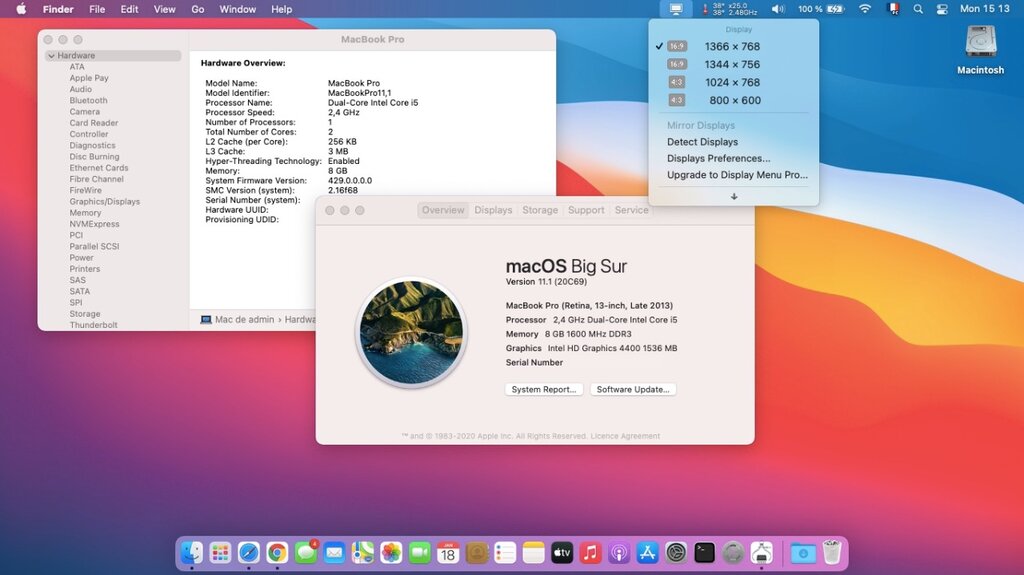

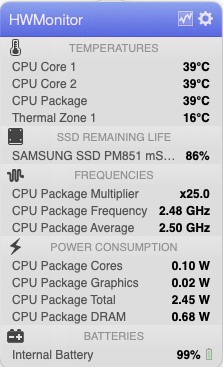

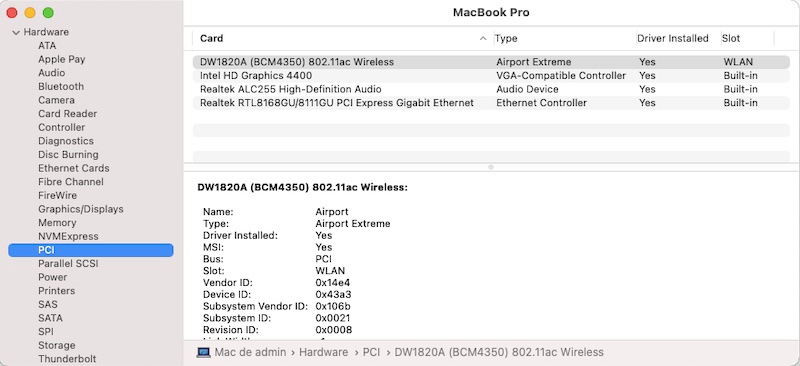


.jpg.56b1c8a38c435a615c7605fb5c995954.jpg)
